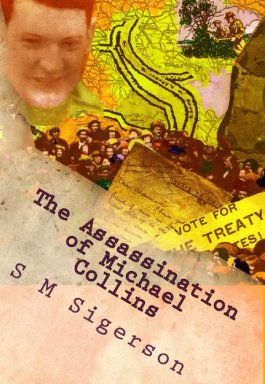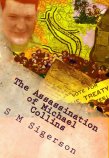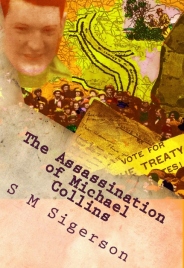
(left to right) Michael’s mother Maryann O’Brien Collins, his sister Mary Collins-Powell, and his grandmother Johanna McCarthy O’Brien co 1900
Among the great volume of commentary on Michael Collins, of all shades and quality, his intimate personal relationships, especially with women, have been a favorite focus for the lamentable number whose appetite for lurid gossip exceeds meticulous adherence to facts.
In honor of International Women’s Day, this excellent overview of Collins’ close connections with strong women and the women’s movement of his time is by P Prowler.
The product of a household headed by a hard-working single mother (after his aged father’s death when Michael was no more than seven,) Collins needed no lectures on women’s leadership potential. His own highly competent, nurturing mother managed the family farm, labourers, construction crews; while doing much to encourage and support seven of her children in pursuing successful careers away from the farm. All while earning praise as “a hostess in ten thousand.” Four sisters, much older than he, all doted on “The Big Fella,” as they affectionately dubbed the baby of the family,
The formative role of these many strong, competent, loving women in his childhood and youth produced a man who deeply respected women and thrived on female company of all ages. It also sometimes manifested in sensitive, nurturing care toward those he was responsible for. His qualifications of this kind were exemplified in his appointment as aide-de-camp to 1916 Rising organizer Joseph Plunkett, whose chronic health problems were a challenge to his presence at The Rising’s headquarters in the General Post Office.
It is perhaps no coincidence, therefore, that we have a woman to thank for the role Collins subsequently played in national events. Following the Rising, it was Thomas Clarke’s widow, Kathleen Daly Clarke, who singled out Michael to head up a re-organizition of the Irish Volunteers, for another go. A good call, as it proved; for during Collins’ tenure at the helm (and at no other time, before or since,) Ireland won its greatest victories to date against the British Empire’s unwelcome colonial occupation.
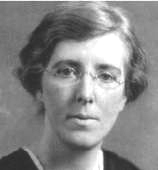 Collins’ lifetime exactly coincided with a period of aggressive, mass agitation for women’s rights. The female suffrage movement was in Ireland often closely linked with the campaign for Irish independence. Many proponents belonged to both “camps”. Full enfranchisement for women became enshrined in the 1916 Proclamation, the legal founding document of the Republic of Ireland. It was the modern world’s first national declaration to do so. This was the political climate in which Collins grew up and prospered. Yet he remained one of the few great men of the time who did not omit to use gender-inclusive language in his speeches, and to explicitly acknowledge women’s contributions and concerns on a regular basis therein.
Collins’ lifetime exactly coincided with a period of aggressive, mass agitation for women’s rights. The female suffrage movement was in Ireland often closely linked with the campaign for Irish independence. Many proponents belonged to both “camps”. Full enfranchisement for women became enshrined in the 1916 Proclamation, the legal founding document of the Republic of Ireland. It was the modern world’s first national declaration to do so. This was the political climate in which Collins grew up and prospered. Yet he remained one of the few great men of the time who did not omit to use gender-inclusive language in his speeches, and to explicitly acknowledge women’s contributions and concerns on a regular basis therein.
All of this belies the far-fetched “Mick the misogynist” quip which has been occasionally offered, (along with every vice and virtue that could be 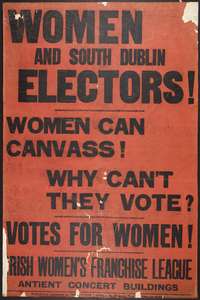 attributed to him.)
attributed to him.)
Collins’ predecessor in the independence movement, Charles Stuart Parnell, was defeated by a sexual scandal. Collins’ detractors have occasionally attempted to raise similar issues. Reported to have sown some wild oats during his teen career in London (albeit while living under the roof of an older sister,) no scandal concerning his sexual life has ever been substantiated.
His intimate connections appear to have been no less healthy, vigorous, and well-conducted than other aspects of his life: his relations with women affectionate and normal, providing no evidence either of inexperience, excess or aberration.
At the same time, he may be said to have been never without female companionship. He carried on dating and epistolary relationships with a number of women such as Susan Kileen and “Dilly” Dicker, who also worked with him in positions of great trust during the struggle for independence. Their correspondence shows that they remained on friendly terms until the end of his life.
In 1921-22, he became engaged to Kitty Kiernan,[36] and made plans for a normal family life after the war. Of their voluminous correspondence, more than 241 letters survive. They provide an important record, not only of their intimacy, but of his daily life.
Detailing his exhausting schedule, during the concurrent national crisis, their letters chronicle the challenges the couple faced in getting quality time together, under the circumstances. In so doing, they prove it quite doubtful that he could have simultaneously devoted much attention to any additional liaison. Allegations of affair(s) with English society women at this same time are unsubstantiated, and fraught with suspicious political connotations. Those concerning Hazel Lavery originate chiefly with that lady herself, and are unsupported by comparable evidence.
Read more
“The Assassination of Michael Collins:
What Happened At Béal na mBláth?”
Paperback or Kindle edition here:
www.amazon.com/dp/1493784714
All other e-reader formats:
www.smashwords.com/books/view/433954
Read reviews:
http://www.rabidreaders.com/2014/12/03/assassination-michael-collins-s-m-sigerson-2/
Or ask at your local book shop
Also see:
“Michael Collins and the Women Who Spied For Ireland”
https://www.goodreads.com/book/show/157333.Michael_Collins_and_the_Women_Who_Spied_for_Ireland
“Michael Collins and the Women in His Life”
https://www.goodreads.com/book/show/157335.Michael_Collins_and_the_Women_in_His_Life
